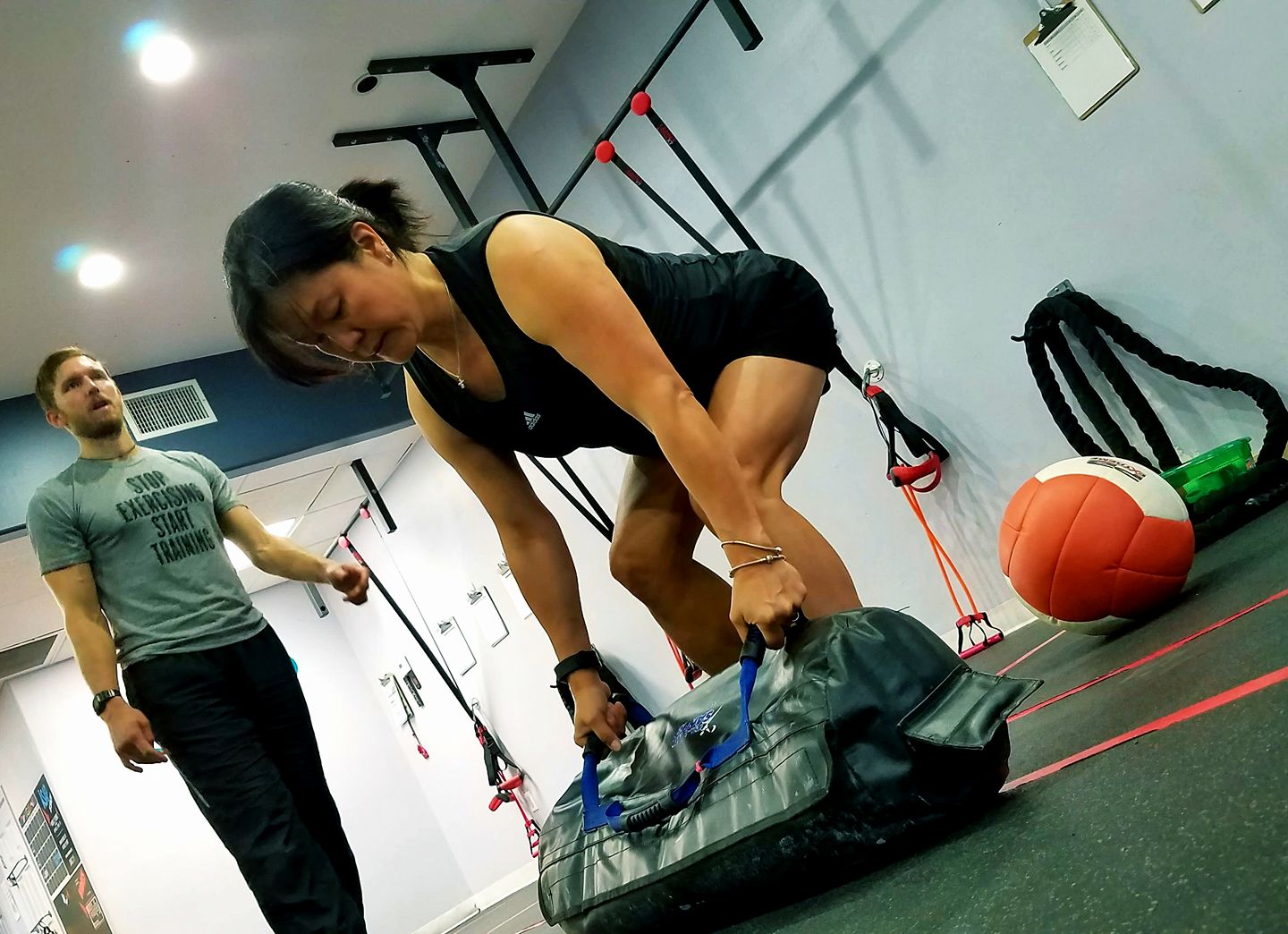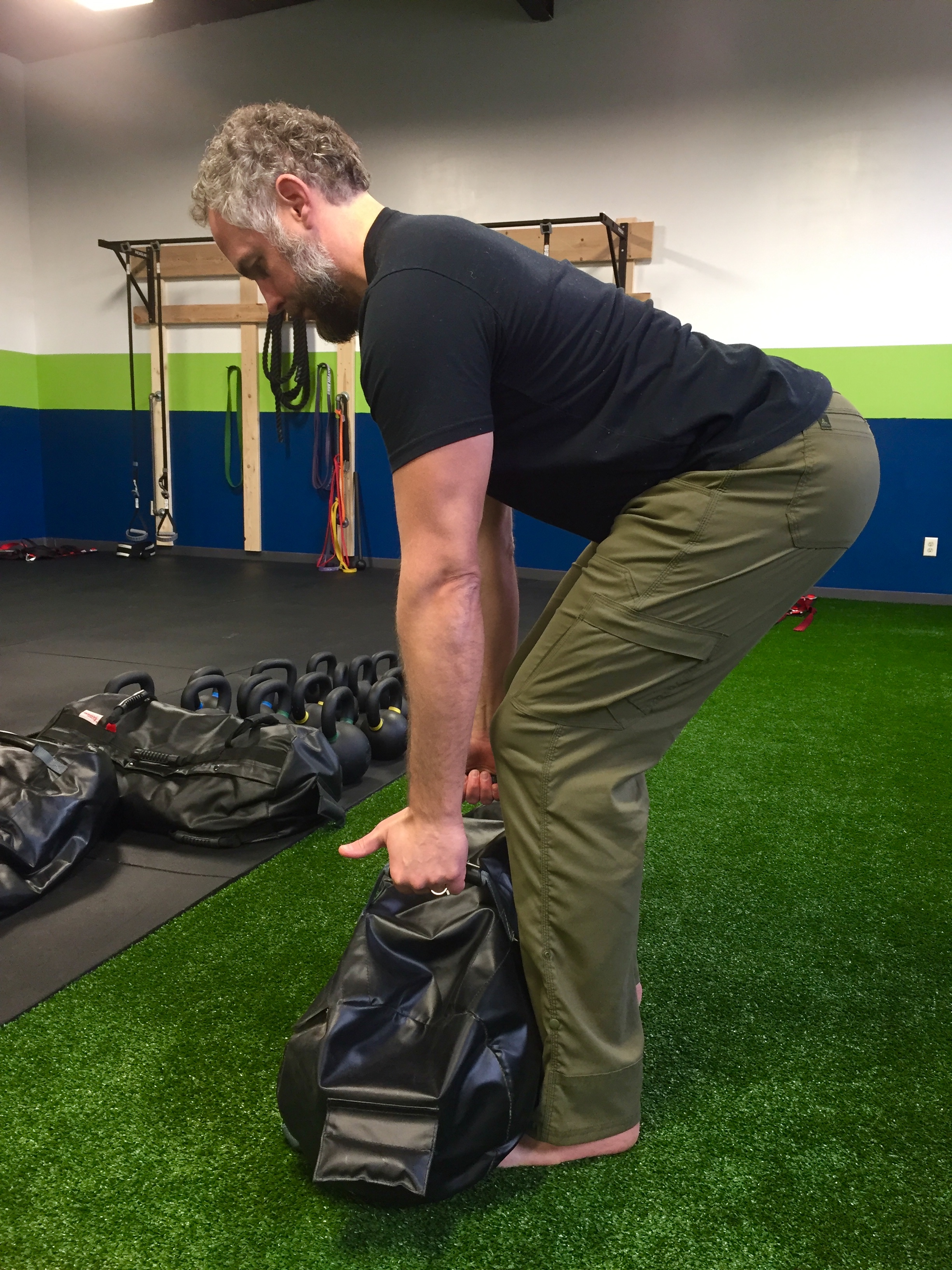Cleaning Up Your Deadlift!
2019-02-8
Cory Cripe, DVRT Master, (Creator DVRT Movement Strength)
I still remember the smell of my high school gym in the 90s with the sounds of heavy rock through the boombox and iron clanking on the barbells with every repetition.
I enjoyed playing football in the Fall, but after that was done – you could find me in the weight room. I really had no desire to play any other sports at the varsity level – except this one time my Junior year there was a girl on the track team I may have been interested in. So, I joined track & field and that lasted all but two weeks because I decided being in the weight room was more important & interesting for me than a girl on the track team!

The squat was the king of exercises for the lower body in my eyes so I didn’t need to spend too much time on the deadlifts – maybe I’ll just see what’s going on over there at the leg curl machine. And I’ll tell you what, if I could, I would so go back in time and slap my younger self up for this mistake!
Fast forward to the present day and it’s not the deadlift exercise I have come to love, but the various hip hinge movements I have discovered through DVRT that have me going head over heels.
If you remember my last blog (you can read it HERE) I discussed the gateway exercise for the hip hinges: hip bridges. My intent today is to unveil for you how using the simple cues for the hip bridges have a lot of carryover for coaching and performing the deadlift exercise – basically the next hip hinge progression.
If you can picture a conventional deadlift in your head, you’d probably see a barbell loaded up with plates, maybe a weight belt, and lots of chalk. The biggest difference you should pick up on when you compare the barbell deadlift to the DVRT deadlift using the Ultimate Sandbag is the grip of the implements. Using the barbell forces the lifter to hold with a pronated grip (sometimes an alternate grip) and it can be difficult to engage the lats with such a grip, no matter how much you try to “break the bar.”

But the genius behind the engineering of the Ultimate Sandbag is how you can receive more feedback through the lats by holding the USB with the neutral grip handles, instead of the pronated grip handles. And just to be clear, no exercise using the USB should be done with the pronated handles except snatch drills and snatch variations.
Now that we have that out of the way, once you can understand the intent of the hip bridge with the USB, performing (or coaching) the deadlift is going to be that much easier! Let’s begin with those feet again. If lifting your hips during the hip bridge was due to pushing the feet through the floor, then you understand the very important relationship between your feet and the ground and can use that now with your deadlift exercise.
Before I allow our clients at Fitness Lying Down to move into a hip hinge to address the USB on the floor – I make sure they are grabbing the ground with their feet. While hip hinging and reaching for the handles, they need to continue pressing those feet into the floor.
And what is all this pushing for – even before we “exercise?” It’s to set the stage. As I talked about in the last hip hinge blog – when you push the feet into the ground, the ground pushes back and there is a chain reaction that occurs through the core: the stage. So if the stage isn’t set properly, the show is going to be lousy at best!
Moving well is never an accident and there needs to be purpose in moving well – so by creating this tension through the body via the feet I have more energy ready to be used than if we were to just “squeeze my glutes.” And that stored up energy is going to make your deadlift that much more successful! #TRUESTORY
Using the USB offers great feedback, as well, to determine if you are moving in an authentic hip hinge pattern. When at the bottom of the deadlift, with the USB close to the shins, check where the knees and the forearms are. If you find the knees touching the forearms or exceeding past the forearms – then we are no longer hip hinging, but squatting. When there is a little daylight between the knees and forearms, you can be certain of the fact that you’re in a hip hinge.
The holding position of the USB is what I love about using the DVRT hip bridge over bodyweight hip bridges to prepare for the deadlifts. With the bodyweight hip bridge there is no connection from the lower body to the upper body – even if you cue the feet. When you’re ready to address any implement for the deadlift (USB, kettlebells, dumbbells, barbells, hex bar, etc) you need to hold on to pick it up – something bodyweight hip bridges cannot offer – but the hip bridges using the USB can!
Holding the USB in the hip bridges, using the outside handles (which are neutral grips) has more carryover when physically grabbing the handles of the USB – again neutral grips – for the deadlift exercise. Learning to pull apart the USB handles while lying on your back in the hip bridge offers the opportunity to learn how to create tension through the lats, not the shoulders, in a very stable environment.

It isn’t about just holding the weight, but the tension we create via the weight.

Using what we learned from the DVRT hip bridge and applying it to the deadlift makes so much more sense now – more than just moving from a bodyweight hip bridge to a weighted deadlift! Pushing the feet through the floor as we push our hips back into the hip hinge position creates stability through the knees and low back. Grabbing the neutral handles on the USB and pulling them apart (just like we would for the hip bridge) automatically packs the shoulders and pulls the spine into a neutral position. This is a very good cue to use for those of us that round our shoulders when deadlifting.

Instead of using many complex cues or those that aren’t working simply getting people to “pull the handles apart” will fix almost everything.

People will get the handles, but unless you set the feet people end up still squatting. As you can see it looks really close to a good deadlift, but with the knees going between the handles or running into the arms is a sure sign of squatting and not hinging.

With the shoulders packed now that allows tension to be created in the lats. And that tension connected with the tension present in the hips makes way for a valuable connection through the core – stabilizing the shoulders, low back, and knees, the three biggest areas people complain of pain, right? It may seem too simple, but learning how to cue the feet and the hands will make all the difference in the deadlift experience!
Of course there are so many various hip hinges out there in the DVRT universe, but there is one more hip hinge that needs to be mastered before moving forward and I’m looking excited to share some coaching strategies in my next blog. Stay tuned!
Last week to save 30% on our Force, Power, and Core Ultimate Sandbags and get our DVRT Pelvic Control course for FREE! Use coupon code “vday” HERE
© 2025 Ultimate Sandbag Training. Site by Jennifer Web Design.







